Dr Dexter Keto Tips: How to Achieve and Maintain a Healthy Keto Lifestyle Are you interested in losing weight and maintaining a healthy lifestyle? Dr Dexter Keto Tips might just be what you need. Dr Dexter is a renowned medical practitioner and keto expert who has helped many individuals achieve their weight loss goals through a sustainable ketogenic lifestyle. In this article, we will delve into Dr Dexter Keto Tips, discuss what the ketogenic diet is, and provide you with practical tips for achieving and maintaining a healthy keto lifestyle. What is the Ketogenic Diet? The ketogenic diet is a low-carb, high-fat diet that has gained popularity in recent years due to its effectiveness in promoting weight loss and improving overall health. See the Keto Shop here The diet involves reducing carbohydrate intake and replacing it with healthy fats, which puts the body in a state of ketosis, where it burns fat for energy instead of glucose. Benefits of the Ketogenic Diet Research has shown that the ketogenic diet has numerous benefits, including weight loss, improved blood sugar control, and reduced risk of certain diseases such as diabetes, cancer, and epilepsy. The diet also helps to reduce inflammation, boost energy levels, and improve brain function. Tips for Achieving and Maintaining a Healthy Keto Lifestyle Plan Your Meals: To ensure that you stay within your daily macro limits, it is important to plan your meals ahead of time. You can use online meal planners or simply write down a weekly menu to keep track of what you are eating.
Don't wanna be here? Send us removal request.
Text
Low Carb Beer Guide UK
Beer lovers who are watching their carbohydrate intake have reason to rejoice! Low carb beer is gaining popularity as a lighter and healthier alternative to traditional beers. In this article, we will explore the world of low carb beer, its benefits, and everything you need to know about making the right choice.
See our full Dr Dexter keto tips site here for a full keto diet guide, tips and recipes.

Introduction to Low Carb Beer
Whether you're on a low-carb diet, managing your blood sugar levels, or simply looking for a lighter beer option, low carb beer can be a great choice. With fewer carbohydrates and calories compared to regular beers, it allows you to enjoy a refreshing drink while being mindful of your health goals.
What is Low Carb Beer?
Low carb beer is a type of beer that is brewed to have a reduced carbohydrate content. Brewers achieve this by using special brewing techniques or substituting traditional grains with low-carb alternatives. The result is a beer that is lower in carbohydrates but still retains its distinct flavour and characteristics.
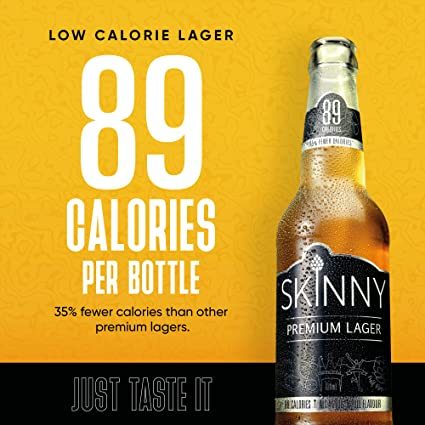
The Benefits of Low Carb Beer
Low carb beer in the UK offers several benefits that make it an attractive choice for many beer enthusiasts. Firstly, it allows you to indulge in your favourite beverage without worrying about the excess carbs. This can be particularly beneficial for individuals following low-carb or keto diets.
Moreover, low carb beer is often lower in calories compared to regular beer, which can be advantageous for those looking to maintain or lose weight. Additionally, it may have a lower alcohol content, making it a more suitable option for those who prefer a milder buzz.
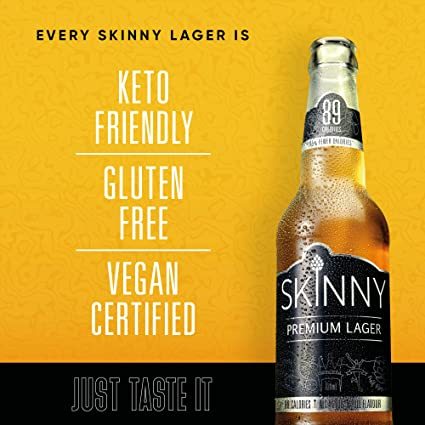
Understanding Carbohydrates and Beer
To fully appreciate low carb beer, it's essential to understand carbohydrates and their role in beer production. Carbohydrates in beer primarily come from the malted barley used during the brewing process. These carbs are consumed by yeast during fermentation, leading to the formation of alcohol and carbon dioxide.
Popular Brands of Low Carb Beer
In recent years, many breweries have recognized the demand for low carb beer and introduced their own offerings. Some popular brands include Brand A, Brand B, and Brand C. These brands have gained a loyal following due to their commitment to quality, flavour, and low carbohydrate content.
Here are some popular brands of low carb beer in the UK along with a brief description:
BrewDog Punk AF:
BrewDog is known for its craft beers, and Punk AF is their low carb, alcohol-free option. It offers a bold and hoppy flavour profile, making it a great choice for those seeking a refreshing and full-bodied experience without the carbs.

Adnams Ghost Ship Alcohol-Free:
Adnams Ghost Ship Alcohol-Free is a low carb beer that maintains the distinct flavour of the original Ghost Ship ale. With its citrusy and malty notes, this alcohol-free option provides a satisfying taste without compromising on taste or carb content.
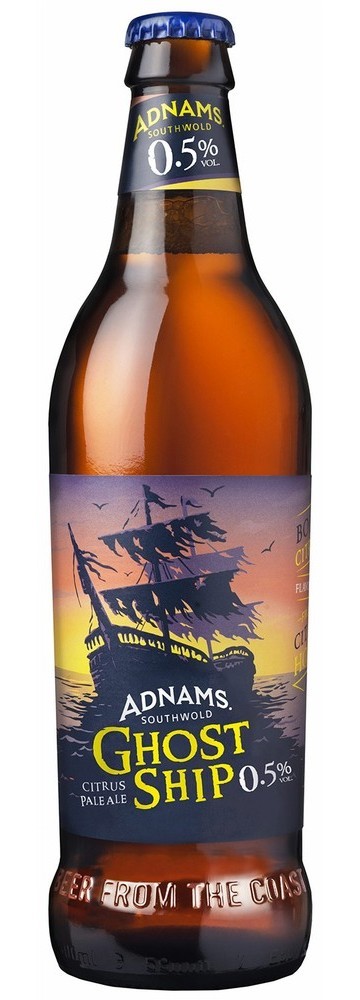
Skinny Brands Lager:
Skinny Brands Lager is a popular choice for those watching their carb intake. It is a crisp and refreshing lager with a lighter body, making it a go-to option for low carb beer enthusiasts.
Thornbridge Big Easy:
Thornbridge Big Easy is a low carb pale ale that offers a balanced blend of hops and citrus flavours. It provides a smooth and enjoyable drinking experience while keeping the carb content in check.
Guinness Open Gate Pure Brew:
Guinness Open Gate Pure Brew is a non-alcoholic, low carb version of the iconic Irish stout. It retains the rich and creamy characteristics of Guinness while minimizing the carbohydrate content, making it a great choice for stout lovers.
Pistonhead Flat Tire:
Pistonhead Flat Tire is a low carb lager with a distinctively smooth taste. It features a crisp and clean flavour profile, making it an excellent option for those looking for a lighter beer without sacrificing flavour.
Peroni Libera 0.0%:
Peroni Libera 0.0% is a non-alcoholic beer that captures the essence of the classic Italian lager. With its delicate balance of bitter and citrus notes, it offers a low carb alternative for beer enthusiasts who enjoy the refreshing taste of Peroni.
Heineken 0.0:
Heineken 0.0 is a popular choice for those seeking a low carb, non-alcoholic beer. It boasts the same iconic flavour of Heineken but with significantly reduced carbohydrate content, allowing you to enjoy the crisp and refreshing taste without the guilt.
Brooklyn Special Effects:
Brooklyn Special Effects is a flavourful non-alcoholic beer with reduced carbs. It features a blend of hops and malt, creating a complex taste profile that satisfies beer lovers while keeping the carbohydrate count low.
Innis & Gunn Innis & None:
Innis & Gunn Innis & None is a zero-alcohol, low carb beer that provides a unique and refreshing drinking experience. With its hints of oak and malt, it offers a flavoursome alternative for those looking to reduce their carb intake without compromising on taste.
Becks Blue Alcohol-Free:
Becks Blue Alcohol-Free is a well-known low carb beer that delivers the familiar crisp and clean taste of Beck's. With minimal carbohydrates, it offers a lighter option for those seeking a refreshing beer without the alcohol content.
Sharp's Doom Bar Zero:
Sharp's Doom Bar Zero is a non-alcoholic, low carb version of the popular Doom Bar amber ale. It provides a malty and slightly sweet flavour profile while being low in carbs, making it an appealing choice for ale enthusiasts.
Estrella Galicia 0.0:
Estrella Galicia 0.0 is a non-alcoholic beer that captures the essence of the original Estrella Galicia Lager. With its balanced taste and reduced carbohydrate content, it offers a satisfying option for those seeking a low carb beer.
San Miguel 0.0:
San Miguel 0.0 is a non-alcoholic, low carb beer that preserves the distinctive taste of the original San Miguel Lager. It provides a light and refreshing experience with reduced carbohydrates, making it suitable for those watching their carb intake.
St Peter's Without:
St Peter's Without is a low carb, alcohol-free beer that combines traditional brewing methods with modern techniques. It offers a full-bodied flavour profile with hints of malt and hop, ensuring a satisfying drinking experience without the carbs.
Budweiser Zero:
Budweiser Zero is a non-alcoholic beer with reduced carbohydrates that still captures the classic Budweiser taste. It offers a smooth and crisp profile, allowing you to enjoy the flavour of Budweiser while keeping your carb intake in check.
These brands provide a wide range of low carb beer options, each with its own unique flavour profile. Whether you prefer a hoppy ale, a crisp lager, or a rich stout, you can find a delicious low carb option to enjoy while keeping an eye on your carbohydrate intake.
How to Choose the Right Low Carb Beer
When selecting a low carb beer, it's important to consider your personal preferences and health goals. Start by checking the nutritional information provided on the label or brewery's website. Look for beers with lower carbohydrate and calorie counts while still offering the taste and characteristics you enjoy.
Low Carb Beer and Weight Loss
For individuals aiming to shed extra pounds, low carb beer can be a helpful tool. By reducing the carbohydrate and calorie intake from beer, you can create a calorie deficit and potentially support weight loss efforts. However, it's crucial to keep moderation in mind and consider the overall balance of your diet.
Low Carb Beer and Diabetes
People with diabetes often need to monitor their carbohydrate intake to manage their blood sugar levels effectively. Low carb beer can be a suitable choice for individuals with diabetes, as it provides a beer option with fewer carbohydrates that are less likely to cause blood sugar spikes.
Low Carb Beer and Blood Sugar Levels
Even for individuals without diabetes, managing blood sugar levels is essential for overall health. Low carb beer can help maintain stable blood sugar levels since it contains fewer carbohydrates. However, it's still important to consume alcohol in moderation and be aware of any individual reactions.
Low Carb Beer and Taste
One common misconception about low carb beer is that it compromises on taste. However, many breweries have invested in creating flavourful low carb options that can rival traditional beers. With a wide range of styles and flavours available, there's likely a low carb beer that suits your taste preferences.
Low Carb Beer and Hangovers
Excessive alcohol consumption can lead to unpleasant hangovers, regardless of the beer's carbohydrate content. While low carb beer may be gentler on the body due to its lower alcohol content, responsible drinking practices and moderation are still crucial to minimize the risk of hangovers.
Low Carb Beer and Alcohol Content
Low carb beer often has a lower alcohol content compared to regular beer. This can be advantageous for individuals who prefer a milder buzz or those who want to limit their alcohol intake. However, it's important to note that alcohol content can vary among different brands and styles of low carb beer.
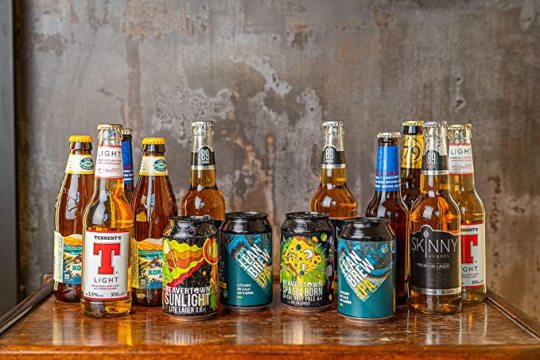
Drinking Low Carb Beer Responsibly
When enjoying low carb beer, responsible consumption is key. Set personal limits, be mindful of your alcohol intake, and always prioritize your health and well-being. Additionally, consider alternatives such as non-alcoholic or alcohol-free beer if you prefer to avoid alcohol entirely.
Is Low Carb Beer for Everyone?
While low carb beer can be a great option for many individuals, it may not be suitable for everyone. It's important to consider your specific health needs, dietary restrictions, and personal preferences. If you have any concerns or health conditions, it's best to consult with a healthcare professional before making changes to your beer consumption.
Conclusion On Low Carb Beer
Low carb beer offers a lighter and healthier alternative for beer lovers who want to watch their carbohydrate intake or make mindful choices about their alcohol consumption. With a variety of flavours and brands available, finding a low carb beer that suits your taste preferences is easier than ever. Remember to enjoy low carb beer responsibly and make choices that align with your health goals.
Frequently Asked Questions (FAQs)
Can low carb beer help with weight loss?
Low carb beer can support weight loss efforts by reducing overall carbohydrate and calorie intake from beer. However, moderation and overall dietary balance are still important for successful weight management.
Is low carb beer suitable for people with diabetes?
Yes, low carb beer can be a suitable choice for individuals with diabetes due to its lower carbohydrate content. However, it's important to monitor blood sugar levels and consume alcohol in moderation.
Does low carb beer compromise on taste?
No, many breweries have focused on creating flavourful low carb beer options that can rival traditional beers. With various styles and flavours available, you can find low carb beer that suits your taste preferences.
Does low carb beer cause fewer hangovers?
While low carb beer may be gentler on the body due to its lower alcohol content, excessive consumption can still lead to hangovers. Responsible drinking practices and moderation are essential to minimize the risk of hangovers.
Can everyone drink low carb beer?
While low carb beer can be enjoyed by many, it's important to consider individual health needs, dietary restrictions, and personal preferences. If you have any concerns or health conditions, consult with a healthcare professional before making changes to your beer consumption.
#keto#ketodiet#keto lchf#ketorecipes#keto beer#keto lager#keto ipa#keto craft beer#keto asf#keto drinks#keto alcohol#keto beer alternatives#guide to keto beer#low carb lager#low carb ipa#Low-carbohydrate brews#Keto-friendly beer#Diabetic-friendly beer#LCHF beer#Low glycemic beer#atkins beer#atkins diet#Low-carb craft beer#Low sugar beer#Low-carb non-alcoholic beer#Low-carb beer brands#zero carb lager#zero sugar beer#zero sugar lager#zero carb beer
5 notes
·
View notes
Text
How to make Keto Garlic Bread & Low Carb Garlic Bread with Cheese
Keto and low carb diets have gained immense popularity in recent years due to their potential for weight loss and health benefits. However, finding suitable bread options that fit within these dietary restrictions can be challenging. In this article, we will explore how to make delicious keto garlic bread and low carb garlic bread with cheese, allowing you to satisfy your bread cravings without compromising your diet. See our full keto tips site here.

Understanding the Keto and Low Carb Diets
Before diving into the recipes, let's briefly understand the principles behind the ketogenic diet and low carb diets. The ketogenic diet focuses on drastically reducing carbohydrate intake and increasing fat consumption to induce a state of ketosis, where the body burns fat for fuel instead of carbohydrates. Low carb diets, on the other hand, aim to limit carb intake to a moderate level, promoting stable blood sugar levels and weight management.
Choosing the Right Ingredients for keto garlic bread
When making keto garlic bread or low carb garlic bread with cheese, ingredient selection is crucial. Traditional wheat flour is high in carbs, so it's necessary to explore low carb flour alternatives such as almond flour, coconut flour, or flaxseed meal. Additionally, using keto-friendly fats and oils like butter or olive oil is essential for achieving the right texture and taste. Don't forget to incorporate low carb seasonings and herbs like garlic powder, oregano, or rosemary for added flavour.

Recipe 1: Keto Garlic Bread
Let's start with the recipe for keto garlic bread. Follow these steps to create a delicious low carb version of this classic dish:
Preheat your oven to the specified temperature.
In a mixing bowl, combine the almond flour, baking powder, garlic powder, and a pinch of salt.
In a separate bowl, whisk together the melted butter and beaten eggs.
Gradually add the wet ingredients to the dry ingredients, mixing well until a dough forms.
Transfer the dough onto a baking sheet lined with parchment paper.
Shape the dough into a rectangular or oval shape, approximately half an inch thick.
Bake in the preheated oven for about 15-20 minutes, or until the bread turns golden brown.
Remove from the oven and let it cool for a few minutes before slicing and serving.
Recipe 2: Low Carb Garlic Bread with Cheese
If you're looking to take your garlic bread to the next level, try this recipe for low carb garlic bread with cheese:
Follow the instructions for the keto garlic bread recipe until step 7.
Once the bread is baked and slightly cooled, sprinkle shredded mozzarella or cheddar cheese evenly over the top.
Place the bread back into the oven for an additional 5 minutes, or until the cheese has melted and turned bubbly and golden.
Remove from the oven and allow it to cool for a couple of minutes.
Slice into portions and serve warm, allowing the gooey cheese to delight your taste buds.
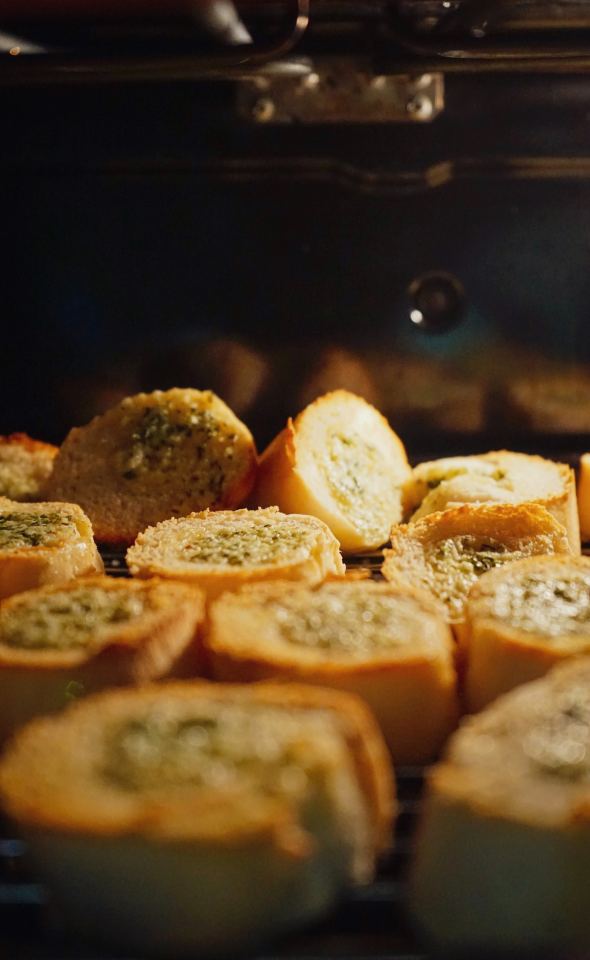
Tips for Perfecting Your Garlic Bread
Here are a few tips to help you perfect your keto garlic bread and low carb garlic bread with cheese:
Experiment with different herbs and spices to add variety to your bread. Consider adding dried basil, parsley, or even a sprinkle of chili flakes for a kick.
Get creative with cheese options. Besides mozzarella and cheddar, try using provolone, Monterey Jack, or a blend of cheeses for a more complex flavour.
Don't be afraid to explore variations of garlic bread, such as garlic knots or breadsticks.The process remains similar, but the shaping and presentation can vary for added fun.
Adjust the level of garlic flavour to suit your preferences. If you're a garlic lover,eel free to add more garlic powder or minced fresh garlic to the dough.
Make sure to store any leftovers in an airtight container in the refrigerator. To reheat, simply pop them in the oven or toaster for a few minutes until warmed through.
How to Adjust Your Keto Garlic Bread to Include Other Toppings
While keto garlic bread is already a delicious treat on its own, you can take it to the next level by incorporating other mouth-watering toppings. Here's how you can adjust your keto garlic bread recipe to include various toppings and enhance its flavour:
Cheesy Spinach and Artichoke:
Spread a layer of creamy spinach and artichoke dip over the baked garlic bread. Top it with a generous amount of shredded mozzarella cheese and broil until the cheese is golden and bubbly.
Pepperoni Pizza Style:
Transform your keto garlic bread into a mini pizza by adding sugar-free marinara sauce, sliced pepperoni, and grated Parmesan cheese. Pop it back in the oven until the cheese is melted and the pepperoni is crispy.
Buffalo Chicken:
Toss cooked shredded chicken in buffalo sauce and layer it over the garlic bread. Sprinkle with crumbled blue cheese or shredded cheddar cheese for an irresistible combination of flavours.
Caprese Delight:
Spread a thin layer of basil pesto over the garlic bread, then top it with slices of fresh mozzarella cheese, cherry tomatoes, and fresh basil leaves. Drizzle with balsamic glaze for a refreshing and tangy twist.
Mediterranean Medley:
Spread a layer of creamy tzatziki sauce over the garlic bread and top it with diced cucumbers, tomatoes, black olives, and crumbled feta cheese. Garnish with fresh dill for a burst of Mediterranean flavours.
Feel free to experiment with other toppings like grilled vegetables, bacon, avocado, or even a combination of different cheeses. By adjusting your keto garlic bread to include various toppings, you can create endless flavour combinations and satisfy your cravings while staying true to your low carb lifestyle.

Benefits of Homemade Keto and Low Carb Garlic Bread
Making your own keto garlic bread and low carb garlic bread with cheese offers several advantages:
By preparing it at home, you have control over the ingredients, ensuring you avoid additives and preservatives often found in store-bought options.
You can customize the recipe to suit your taste preferences. Feel free to adjust the seasonings, cheese types, or even experiment with different low carb flours.
Enjoying a guilt-free indulgence is possible while sticking to your diet plan. These recipes provide a satisfying alternative to traditional high carb garlic bread.
Conclusion
In conclusion, with the right ingredients and simple techniques, you can easily make delicious keto garlic bread and low carb garlic bread with cheese. These recipes allow you to enjoy the flavours you love while maintaining your commitment to a keto or low carb lifestyle. Give them a try and savour the taste of homemade bread without the guilt.
FAQs
· Can I freeze the keto garlic bread?
Yes, you can freeze keto garlic bread. Ensure it is properly wrapped in foil or placed in an airtight container before freezing. To enjoy later, thaw it in the refrigerator overnight and reheat in the oven for a few minutes.
· What are the best low carb flours for making bread?
Some popular low carb flour options for making bread include almond flour, coconut flour, and flaxseed meal. Each has its own unique properties, so feel free to experiment and find the one that suits your taste and dietary needs.
· Can I substitute almond flour with coconut flour?
Yes, you can substitute almond flour with coconut flour, but the ratio may differ. Coconut flour absorbs more liquid than almond flour, so you'll typically need less coconut flour compared to almond flour in a recipe. It's best to follow a specific recipe that calls for coconut flour to ensure the right texture and consistency.

· How many carbs are in a serving of low carb garlic bread?
The number of carbs in low carb garlic bread will vary depending on the specific ingredients and quantities used. However, compared to traditional garlic bread, low carb versions typically contain significantly fewer carbs, making them a suitable option for those following a low carb or keto diet.
· Can I make keto garlic bread without eggs?
Yes, you can make keto garlic bread without eggs. Instead of using eggs as a binding agent, you can try using alternatives such as flax eggs (ground flaxseed mixed with water) or chia eggs (ground chia seeds mixed with water). These alternatives work well in most bread recipes and provide a similar binding effect.
#keto#keto garilic bread ketobread keto bread keto cheese#Garlic bread transformation recipe#Baked keto goodness#Flavorful low-carb twist#Keto-approved bread option#Carb-conscious garlic bread#Guilt-free garlic treat#Creative low-carb snack#Keto-friendly bread innovation#Low-carb garlic bread recipe#Healthy garlic bread alternative#Garlic-infused bread recipe#Savory keto side dish#Innovative low-carb recipe#Crispy keto delight#Low-carb garlic indulgence#Garlic-inspired keto dish#Keto snack option#Guilt-free garlic bread#Low-carb garlic twist#Low-carb garlic infusion#Keto-friendly bread alternative#Baked garlic goodness#Flavorful keto creation#Low-carb garlic bread#Keto-friendly garlic bread#Garlic bread transformation#Keto-friendly Low-carb Garlic-infused Savory delight Healthy indulgence Low-carb bread Guilt-free pleasure Low-carb comfort food Flavorful t
4 notes
·
View notes
Text
How to Make Keto Pizza: A Step-by-Step Guide
Pizza is a popular food all over the world. But for those following the keto diet, traditional pizza is not an option due to its high carb content. However, that doesn't mean you have to give up pizza entirely. With a few modifications, you can make a delicious keto-friendly pizza. In this article, we'll show you how to make keto pizza from scratch, step by step. For more keto tips see our Tumblr site here.
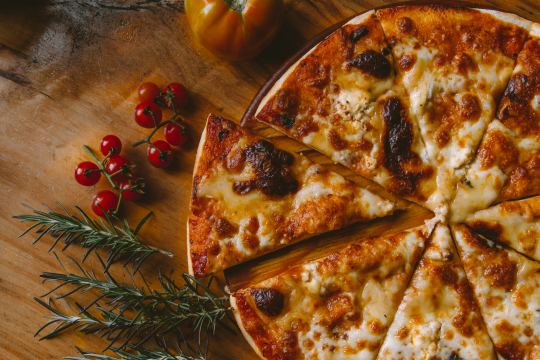
Introduction to Keto Pizza
Pizza is a popular food around the world, loved for its delicious taste and endless topping options. However, traditional pizza can be high in carbs, making it unsuitable for those following a keto diet. This is where keto pizza comes in - a low-carb alternative that allows you to enjoy the deliciousness of pizza while staying true to your dietary goals. For more Keto Pizza Recipes here.
Here are some key differences between keto pizza and regular pizza:
Keto Pizza:
· Uses a low-carb crust, such as cauliflower crust or almond flour crust
· Uses keto-friendly sauce, cheese, and toppings that are low in carbs
· Is high in healthy fats and protein, which helps to keep you full and satisfied
· Can be customized to fit your dietary needs, such as gluten-free or dairy-free options
· May have a different texture and taste than regular pizza
Regular Pizza:
· Uses a high-carb crust made from wheat flour
· Uses regular tomato sauce, cheese, and toppings that may be high in carbs
· Is typically lower in protein and healthy fats than keto pizza
· May not be suitable for those with dietary restrictions or preferences
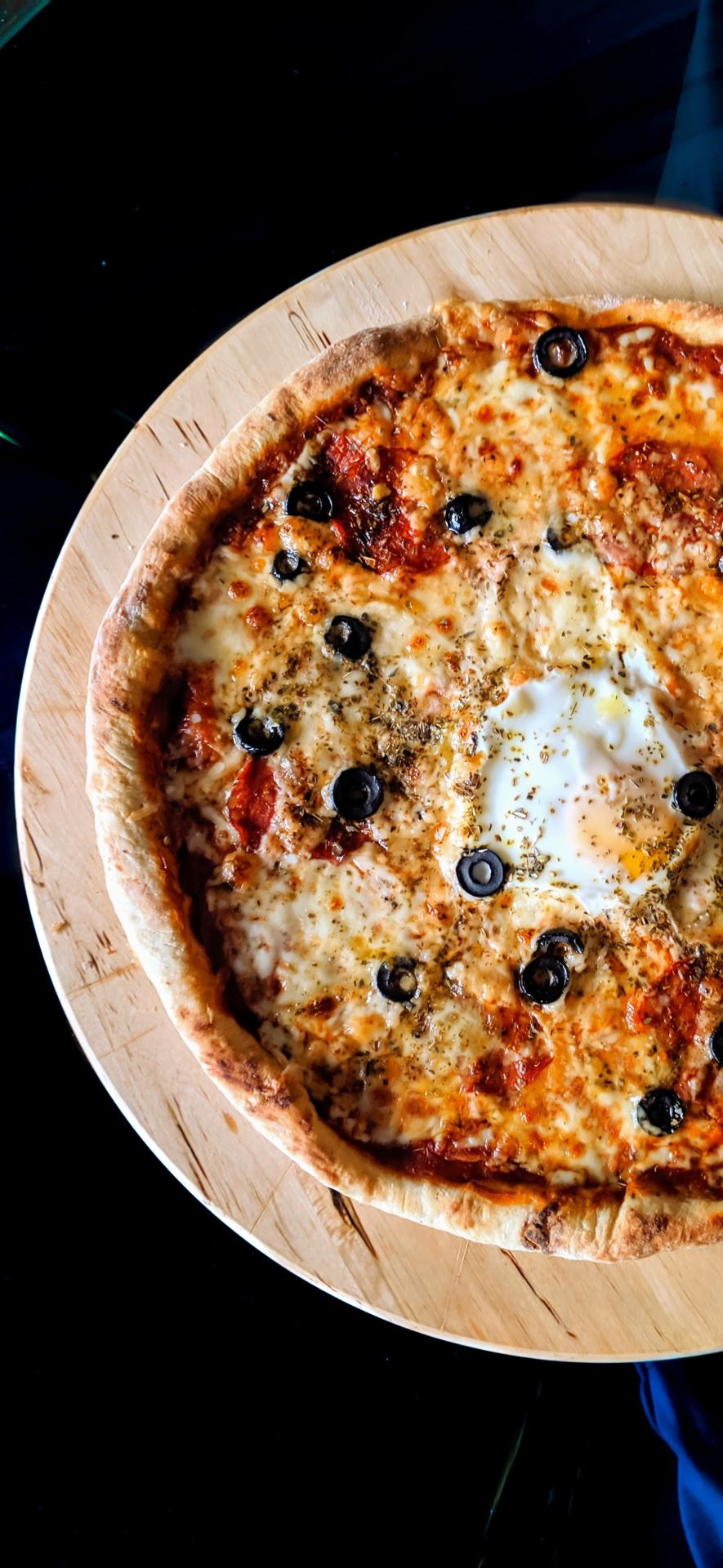
Has a distinct texture and taste that may be difficult to replicate with keto-friendly ingredients
When it comes to taste, keto pizza may not be exactly the same as regular pizza, but it can still be delicious in its own right. Many people find that they enjoy the unique taste and texture of keto pizza, and appreciate the fact that they can indulge in this comfort food while sticking to their dietary goals.
In conclusion, while keto pizza may be different from regular pizza, it is still a great option for those following a keto diet who want to enjoy a delicious, healthy version of this popular comfort food. By choosing the right ingredients and toppings, you can create a pizza that is both low in carbs and high in flavor. So why not give it a try and see for yourself how delicious keto pizza can be?
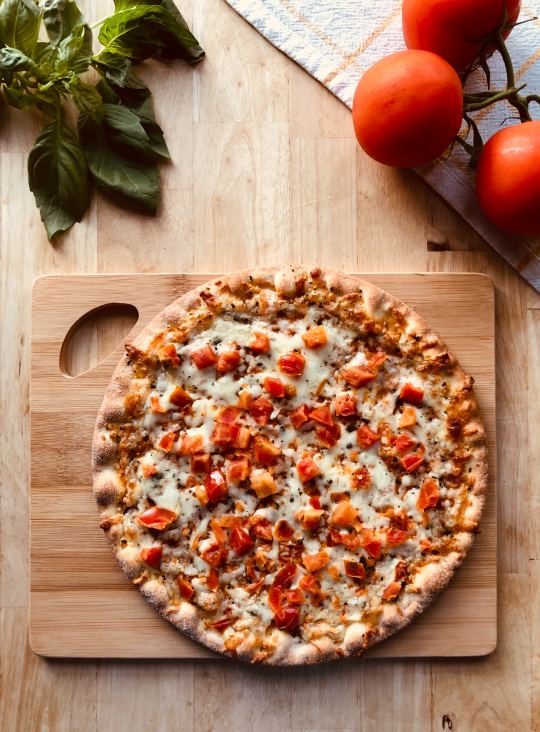
What is the Keto Diet?
The ketogenic diet, or keto diet for short, is a low-carb, high-fat diet that has been shown to be effective in promoting weight loss and improving overall health. The goal of the keto diet is to enter a state of ketosis, where the body uses fat for fuel instead of carbohydrates.
Why Make Keto Pizza? Pizza is a beloved food that many people crave, even when they're on a diet. Unfortunately, traditional pizza is not an option for those following a keto diet, as the high carb content in the crust and toppings can quickly exceed their daily carb limit. However, making a keto-friendly pizza allows you to enjoy this comfort food while still staying true to your dietary goals.
One of the main benefits of making a keto pizza is that it allows you to indulge in your cravings without feeling guilty. Traditional pizza is typically high in carbs, which can cause blood sugar spikes and lead to weight gain. On the other hand, a keto pizza is low in carbs, high in healthy fats, and can even help you stay in ketosis.
Another benefit of making a keto pizza is that it's incredibly versatile. You can experiment with different crusts, such as cauliflower, almond flour, or coconut flour, and customize your toppings to suit your tastes. Whether you prefer a classic pepperoni pizza or a more exotic combination of flavors, there's a keto-friendly pizza out there for everyone.

Making a keto pizza also allows you to stay on track with your dietary goals. When you're following a strict diet, it's easy to feel deprived and crave the foods you can't have. By making a keto-friendly version of your favorite foods, you can satisfy your cravings and still stick to your diet plan.
In summary, making a keto-friendly pizza is a great way to enjoy this beloved comfort food while still staying true to your dietary goals. With a variety of crust and topping options available, you can customize your pizza to suit your tastes and experiment with different flavors. Plus, indulging in a guilt-free pizza can help you stay on track with your diet and avoid feelings of deprivation.
Keto Pizza Versus Traditional Pizza
Pizza is a beloved food that many people enjoy, but traditional pizza is often high in carbs and not suitable for those following a keto diet. Fortunately, there are now plenty of options for making a keto-friendly pizza that is low in carbs and still packed with flavor. Here are some differences between keto pizza and traditional pizza:
Keto Pizza:
Uses low-carb crust options such as cauliflower crust or almond flour crust
Uses keto-friendly ingredients such as low-carb sauce, cheese, and toppings
Is high in healthy fats and low in carbs
Can be customized to fit specific dietary needs, such as gluten-free or dairy-free
May have a different texture and flavor than traditional pizza
Traditional Pizza:
Uses high-carb crust made from wheat flour
Uses traditional tomato sauce, cheese, and toppings that may be high in carbs
Is higher in carbs and lower in healthy fats
May not be suitable for those with dietary restrictions or preferences
Has a distinct texture and flavor that may be difficult to replicate with keto-friendly ingredients

Comparison Keto Pizza Versus Traditional Pizza
Keto Pizza
Traditional Pizza
Low-carb crust options
High-carb wheat flour crust
Keto-friendly ingredients
Traditional tomato sauce, cheese, and toppings
High in healthy fats, low in carbs
Higher in carbs, lower in healthy fats
Customizable for dietary needs
May not be suitable for dietary restrictions or preferences
Different texture and flavor
Distinct texture and flavor
When it comes to choosing between keto pizza and traditional pizza, it ultimately comes down to personal preference and dietary goals. If you're following a keto diet and want to enjoy pizza while still staying on track with your goals, a keto pizza is a great option. If you don't have any dietary restrictions and enjoy the classic taste and texture of traditional pizza, then a traditional pizza may be the way to go.
In conclusion, while there are differences between keto pizza and traditional pizza, both can be enjoyed in moderation as part of a healthy, balanced diet. By choosing the right ingredients and crust options, you can create a delicious pizza that fits your dietary needs and preferences.
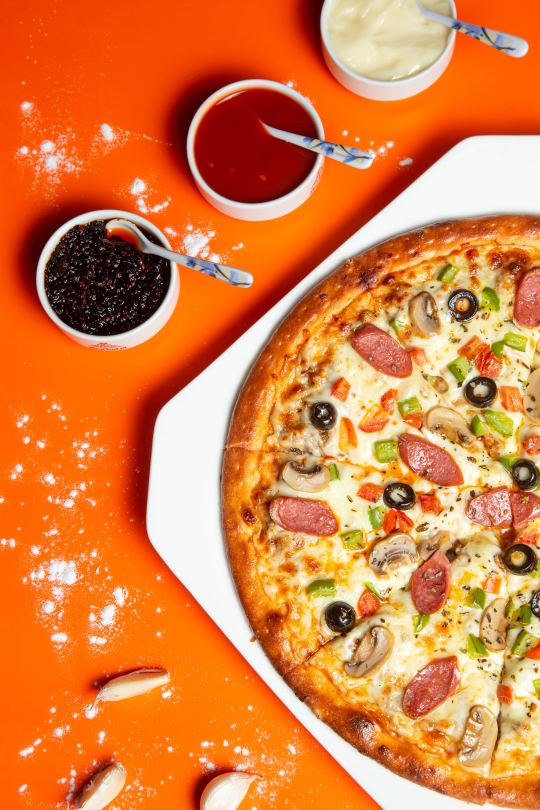
Keto Pizza Crust Options
When it comes to making a keto pizza, one of the most important considerations is the crust. Traditional pizza crust is typically made from wheat flour, which is high in carbs and not suitable for a keto diet. Fortunately, there are several low-carb crust options that can be used to create a delicious and satisfying pizza.
Here are some popular keto-friendly crust options for your pizza:
Cauliflower crust: Made from grated cauliflower, cheese, and eggs, this crust is a popular choice for keto pizza. It's low in carbs, high in fiber, and has a crispy texture that mimics traditional pizza crust.
Almond flour crust: Almond flour is a great alternative to wheat flour for those following a keto diet. It's high in healthy fats, low in carbs, and has a slightly nutty flavor that complements pizza toppings well.
Coconut flour crust: Coconut flour is another popular option for making a keto pizza crust. It's high in fiber, low in carbs, and has a subtle coconut flavor that pairs well with a variety of toppings.
When choosing a crust for your keto pizza, it's important to consider your personal taste preferences and dietary goals. Some crusts may be higher in carbs than others, so it's important to read labels carefully and choose a crust that fits within your daily carb limit.
In summary, there are several keto-friendly crust options available for making a delicious and satisfying pizza. Whether you prefer a cauliflower crust, almond flour crust, or coconut flour crust, there's a crust out there to suit your tastes and dietary needs. By experimenting with different crusts and toppings, you can create a keto pizza that's both healthy and delicious.
How to Make Keto Pizza Crust
To make a cauliflower crust, you'll need to grate cauliflower and then cook it in the oven until it's tender. Then, mix it with almond flour, egg, and cheese, and spread it out on a baking sheet. Bake the crust for a few minutes until it's golden brown and then add your sauce and toppings.
To make an almond flour crust, you'll need almond flour, egg, and cheese. Mix these ingredients together until a dough forms, and then spread it out on a baking sheet. Bake the crust until it's golden brown and then add your sauce and toppings.
To make a coconut flour crust, you'll need coconut flour, egg, and cheese. Mix these ingredients together until a dough forms, and then spread it out on a baking sheet. Bake the crust until it's golden brown and then add your sauce and toppings.

Keto Pizza Sauce
Traditional pizza sauce is typically high in sugar and carbs, so it's not a good option for those following the keto diet. Instead, you can make your own keto-friendly pizza sauce using tomato paste, garlic, and herbs.
To make the sauce, simply mix together tomato paste, minced garlic, and your favorite herbs, such as oregano, basil, and thyme. Add a little bit of water to thin the sauce to your desired consistency.
How to Make Keto Pizza Sauce
When it comes to making a keto pizza, the sauce is just as important as the crust. Traditional pizza sauce is often made with high-sugar ingredients, such as canned tomatoes and sugar, which can quickly add up in carbs. Fortunately, there are plenty of keto-friendly pizza sauce options that are low in carbs and still packed with flavor.
Here are some tips on how to make a keto-friendly pizza sauce:
Choose the right tomatoes: When making a pizza sauce, it's important to choose the right type of tomatoes. Look for canned whole peeled tomatoes that have no added sugar. You can also use fresh tomatoes if you prefer.
Use high-quality olive oil: Olive oil is a staple of Mediterranean cuisine and is a healthy fat that is ideal for a keto diet. Use high-quality olive oil to give your pizza sauce a rich, flavorful base.
Add garlic and herbs: Garlic and herbs are a great way to add flavor to your pizza sauce without adding carbs. Some good options include basil, oregano, and thyme.
Use a blender: To achieve a smooth, creamy consistency, use a blender or food processor to puree your pizza sauce ingredients. This will help to evenly distribute the flavors and ensure that your sauce is the perfect texture for your pizza.
Here's a simple recipe for a keto-friendly pizza sauce: Ingredients:
1 can whole peeled tomatoes
2 cloves garlic, minced
2 tablespoons olive oil
1 teaspoon dried basil
1 teaspoon dried oregano
Salt and pepper to taste
Instructions:
Add the whole peeled tomatoes to a blender or food processor and pulse until smooth.
In a saucepan, heat the olive oil over medium heat. Add the minced garlic and cook until fragrant, about 1-2 minutes.
Add the tomato puree to the saucepan and stir to combine. Add the dried basil and oregano, and season with salt and pepper to taste.
Bring the sauce to a simmer and cook for 10-15 minutes, stirring occasionally, until the sauce has thickened.
Remove from heat and allow the sauce to cool before using it to top your keto pizza.
In summary, making a keto-friendly pizza sauce is easy and requires just a few simple ingredients. By using canned whole peeled tomatoes, high-quality olive oil, and flavorful herbs and spices, you can create a delicious sauce that's low in carbs and perfect for your keto pizza.
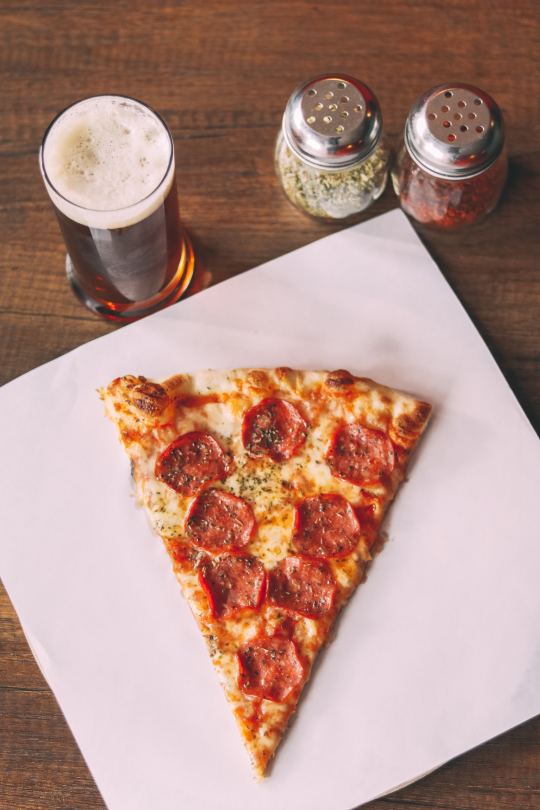
Keto Pizza Toppings
The toppings you choose for your keto pizza will depend on your personal preferences. Some good options include:
Mozzarella cheese
Pepperoni
Sausage
Bacon
Mushrooms
Olives
Bell peppers
Onions
Tips for Making the Perfect Keto Pizza
Making a keto pizza can be a bit challenging, but with these tips, you can make a delicious pizza that's both healthy and satisfying:
Make sure your crust is cooked thoroughly before adding your sauce and toppings. This will ensure that your crust is crispy and won't become soggy.
Use a pizza stone or a cast-iron skillet to bake your pizza. These will help to distribute the heat evenly and ensure that your pizza cooks evenly.
Don't overload your pizza with toppings. Too many toppings can make your pizza soggy and difficult to eat.
If you're using vegetables as toppings, be sure to cook them beforehand. This will help to remove any excess moisture and prevent your pizza from becoming soggy.
Use high-quality ingredients. Since the toppings are the star of the show, it's important to use fresh, high-quality ingredients for the best flavor.
Frequently Asked Questions About Keto Pizza
Can I use a pre-made crust for my keto pizza? Yes, you can use a pre-made crust, but be sure to read the ingredients to ensure that it's keto-friendly.
How many carbs are in a keto pizza? The number of carbs in a keto pizza will depend on the crust and toppings you use. However, a typical serving of keto pizza will have around 5-10 grams of carbs.
Can I freeze leftover keto pizza? Yes, you can freeze leftover keto pizza. Simply wrap it in plastic wrap or aluminum foil and store it in the freezer.
Can I make keto pizza in advance? Yes, you can make keto pizza in advance. Simply prepare the crust and toppings ahead of time and store them separately. When you're ready to make the pizza, simply assemble it and bake it as directed.
Can I make keto pizza without cheese? Yes, you can make keto pizza without cheese. Simply skip the cheese or use a dairy-free cheese alternative.
Conclusion
Pizza is a beloved food that many people crave, but traditional pizza is not an option for those following the keto diet. Fortunately, with a few modifications, you can make a delicious keto-friendly pizza. Whether you prefer a cauliflower crust, almond flour crust, or coconut flour crust, there are many options available to suit your tastes. By following the tips in this article and experimenting with different crusts and toppings, you can create a delicious and healthy pizza that you can enjoy without guilt.
#pizza#keto pizza#ketodiet#ketorecipes#ketomeals#ketotips#ketofriendly#Keto LCHF#lchf pizza#diet pizza#low calorie pizza#ketoweightloss#keto#keto uk#diet pizza recipe#low carb pizza recipe#keto tips#low carb bread#low carb food#low carb recipes#low carb high fat#low carb diet#low cal meal#italian pizza#low carb italian pizza#deep pan pizza#thin crispy pizza#homemade pizza#homemade low carb pizza#almond flour pizza
5 notes
·
View notes
Text
5 Keto Bread Recipes and How to Make Keto Bread
Keto bread is a popular choice among individuals following the ketogenic diet. The ketogenic diet requires individuals to consume foods that are low in carbohydrates, moderate in protein, and high in fat. This diet helps to promote weight loss and offers a range of other health benefits. However, finding bread that fits into this dietary lifestyle can be challenging. Fortunately, there are a variety of keto bread recipes available that are not only delicious but also easy to make at home. In this article, we will explore 5 keto bread recipes and provide instructions on how to make keto bread.See our full keto tips Tumblr Site here.
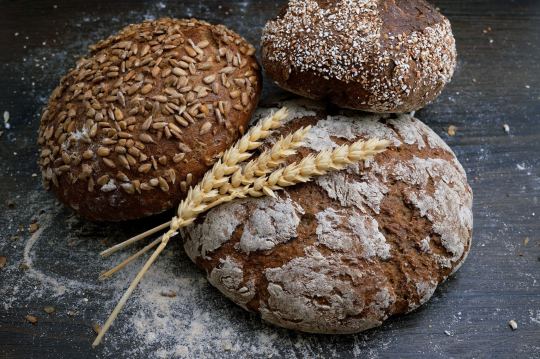
What is the Ketogenic Diet?
The ketogenic diet is a high-fat, low-carbohydrate, and moderate-protein diet that has gained popularity in recent years. The primary aim of this diet is to put the body into a metabolic state called ketosis. When the body is in a state of ketosis, it burns fat for energy instead of carbohydrates. This leads to weight loss and provides a range of health benefits, including improved blood sugar levels, increased energy levels, and better mental clarity.
Why is Keto Bread Necessary?
One of the challenges of the ketogenic diet is finding foods that are low in carbohydrates. Regular bread is high in carbohydrates, which is why it is not suitable for the ketogenic diet. Keto bread is necessary to provide individuals following the ketogenic diet with a bread alternative that is low in carbohydrates and high in fat.
What are the Benefits of Keto Bread?
Keto bread has a range of benefits, including:
Low in carbohydrates - Keto bread is low in carbohydrates, which makes it suitable for individuals following the ketogenic diet.
High in fat - Keto bread is high in fat, which helps to promote feelings of fullness and satiety.
Rich in nutrients - Many keto bread recipes include nutrient-rich ingredients such as almond flour, coconut flour, and flaxseed.
Easy to make - Keto bread is easy to make at home, and there are many keto bread recipes available.

5 Easy Keto Bread Recipes
Here are 5 easy keto bread recipes that you can make at home:
1. Almond Flour Bread
Ingredients:
2 cups of almond flour
2 tsp of baking powder
1 tsp of salt
4 eggs
1/4 cup of melted butter
Instructions:
Preheat the oven to 350°F.
In a mixing bowl, combine the almond flour, baking powder, and salt.
Add the eggs and melted butter to the mixing bowl and stir until well combined.
Pour the batter into a greased loaf pan and bake for 45-50 minutes.
Once done, remove from the oven and let it cool for 10 minutes.
2. Coconut Flour Bread
Ingredients:
1/2 cup of coconut flour
1 tsp of baking powder
1/4 tsp of salt
4 eggs
1/4 cup of melted butter
Instructions:
Preheat the oven to 350°F.
In a mixing bowl, combine the coconut flour, baking powder, and salt.
Add the eggs and melted butter to the mixing bowl and
Stir until well combined and let the batter sit for 5 minutes to thicken.
Pour the batter into a greased loaf pan and bake for 40-45 minutes.
Once done, remove from the oven and let it cool for 10 minutes.
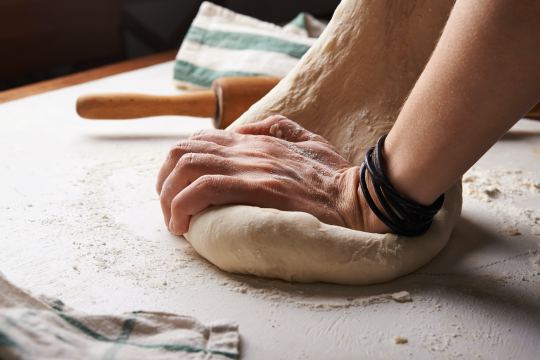
3. Psyllium Husk Bread
Ingredients:
1 cup of almond flour
1/2 cup of psyllium husk
1 tsp of baking powder
1 tsp of salt
4 eggs
1/4 cup of melted butter
Instructions:
Preheat the oven to 350°F.
In a mixing bowl, combine the almond flour, psyllium husk, baking powder, and salt.
Add the eggs and melted butter to the mixing bowl and stir until well combined.
Pour the batter into a greased loaf pan and bake for 50-55 minutes.
Once done, remove from the oven and let it cool for 10 minutes.
4. Flaxseed Bread
Ingredients:
1 cup of flaxseed meal
1 tsp of baking powder
1 tsp of salt
4 eggs
1/4 cup of melted butter
Instructions:
Preheat the oven to 350°F.
In a mixing bowl, combine the flaxseed meal, baking powder, and salt.
Add the eggs and melted butter to the mixing bowl and stir until well combined.
Pour the batter into a greased loaf pan and bake for 45-50 minutes.
Once done, remove from the oven and let it cool for 10 minutes.

5. Cheese and Garlic Bread
Ingredients:
1 cup of almond flour
2 tsp of baking powder
1/2 tsp of salt
4 eggs
1/4 cup of melted butter
1/2 cup of shredded cheddar cheese
1 clove of garlic, minced
Instructions:
Preheat the oven to 350°F.
In a mixing bowl, combine the almond flour, baking powder, and salt.
Add the eggs and melted butter to the mixing bowl and stir until well combined.
Add the shredded cheddar cheese and minced garlic to the mixing bowl and stir until well combined.
Pour the batter into a greased loaf pan and bake for 45-50 minutes.
Once done, remove from the oven and let it cool for 10 minutes.
How to Make Keto Bread?
Making keto bread is relatively easy, and it requires simple ingredients that are low in carbohydrates and high in fat. Here is a general recipe that can be adapted to make a variety of keto bread recipes:
Ingredients:
1 1/2 cups of almond flour
1/2 cup of coconut flour
1/2 cup of psyllium husk
2 tsp of baking powder
1 tsp of salt
6 eggs
1/2 cup of melted butter
Instructions:
Preheat the oven to 350°F.
In a mixing bowl, combine the almond flour, coconut flour, psyllium husk, baking powder, and salt.
Add the eggs and melted butter to the mixing bowl and stir until well combined.
Pour the batter into a greased loaf pan and bake for 45-50 minutes.
Once done, remove from the oven and let it cool for 10 minutes.
Tips for Making Keto Bread
Here are some tips for making delicious and fluffy keto bread:
Use almond flour as a base as it has a neutral flavour and works well with other ingredients.
Add psyllium husk or flaxseed meal to give the bread a more bread-like texture and structure.
Use baking powder to help the bread rise and give it a lighter texture.
Experiment with different flavours and add-ins like garlic, cheese, herbs, and nuts to add variety to your keto bread.
Make sure to grease your loaf pan well to prevent the bread from sticking.
Let the bread cool for at least 10 minutes before slicing to prevent it from falling apart.
Store your keto bread in an airtight container in the fridge for up to a week or freeze for longer shelf life.
Conclusion
Keto bread is a great option for those following a ketogenic diet who miss the taste and texture of traditional bread. With these five delicious and easy recipes, you can enjoy bread while staying true to your low-carb, high-fat lifestyle. Whether you prefer a classic almond flour bread or something with a bit more flavor like the cheese and garlic bread, there is a recipe for everyone. So, grab your ingredients and get baking!
FAQs
Is keto bread gluten-free?
Yes, keto bread is usually gluten-free as it is made with low-carb flours like almond flour and coconut flour.
Can I substitute the almond flour with coconut flour in these recipes?
No, almond flour and coconut flour have different properties and cannot be substituted 1:1. You may need to adjust the recipe if you want to use coconut flour instead of almond flour.
Can I make keto bread without eggs?
Yes, you can make vegan keto bread by using a combination of flaxseed meal and water as an egg substitute.
Can I use a bread machine to make keto bread?
Yes, you can use a bread machine to make keto bread by adapting the recipe to fit the machine's requirements.
How many carbs are in a serving of keto bread?
The carb count can vary depending on the recipe and serving size, but most keto bread recipes have less than 5 grams of net carbs per serving.
#ketobread#keto bread#low carb bread#low carb food#low carb recipes#ketodiet#low carb#lchf bread#lchflifestyle#keto lchf#ketoaf#ketolife#ketorecipes#ketomeals#keto tips#keto#lchfuk#atkins#banting diet#Almond flour keto bread#Coconut flour keto bread#Psyllium husk keto bread#Flaxseed meal keto bread#Chia seed keto bread#Walnut keto bread#Hazelnut keto bread#Pecan keto bread#Sunflower seed keto bread#Sesame seed keto bread#Pumpkin seed keto bread
3 notes
·
View notes
Photo
Proof as they say is in the low carb pudding! Another amazing result

💪 I never, in a million years, thought this was possible. I use to dream about it, I wanted it so bad, but I never thought I would be capable. I didn’t have the money for a weight loss surgery or to pay a dietitian or get a trainer. But, I knew I needed to try. I woke up one day and told myself “Today is the day!” And I never looked back. The fact is EVERYONE knows what they have to do to lose weight, it’s not a big secret. There’s no information that’s being hidden from you. Don’t let “not knowing how” be your excuse anymore. Calorie restriction and movement is all you need. If you want to get fancy with some fad diets GOOGLE is an amazing teacher. You just have to want it bad enough to try and to keep trying when it gets hard. It’s possible. . 📷 @bobogetsfit . . Tag a friend for more motivation!👇👇 😕 Don’t know how to start keto diet properly? or want to lose 5-10 lbs in the first week alone with keto lifestyle ? You can click link in our bio to get Everything You Need for keto Success. Imagine… armed with 4-week meal plan, 7 Keto guide books, and the 3 bonus guides… you’ll be able to start strong and finish strong. 💪 @keto_diet_recipe_ ⏩ Don’t forget to share and follow @keto_diet_recipe_ for more 😃-
#keto #ketodiet #ketotransformation #ketoweightloss #ketolife #ketosis #ketofam #ketofood #ketogirl #ketolifestyle #lchf #eatfatlosefat #salad #lowcarb #lowcarbdiet #lowcarbliving #lowcarbmeal #fatfueled #fatadapted #chickfila #ketogenicliving #easyketo #chicken #ketostrong #lowcarbhighfat #sugarfree #ketones #ketomom (at USA) https://www.instagram.com/p/CYPLMwIPnXz/?utm_medium=tumblr
6 notes
·
View notes
Photo
Seeing people benefit from the LCHF diet makes my day. Having been a yoyo dieter most of my youth to find a diet I can stick to and one that works for others is the best motivation
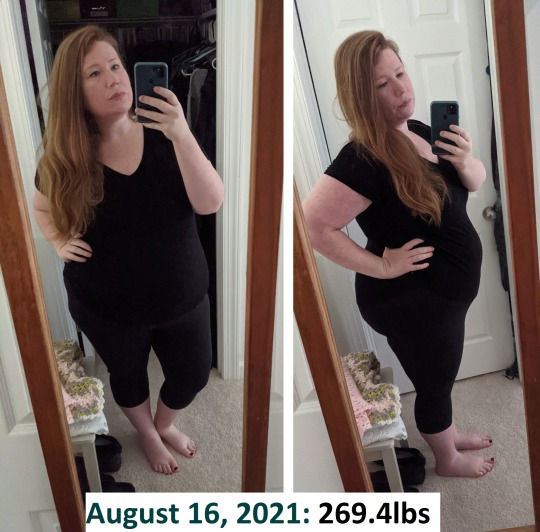
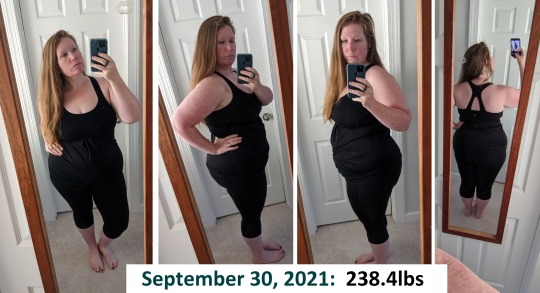
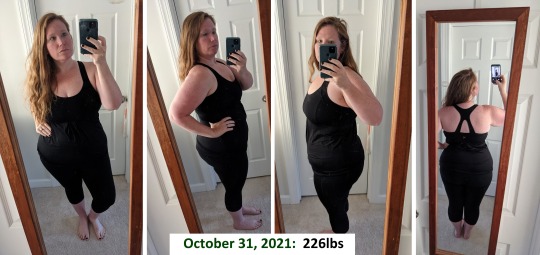
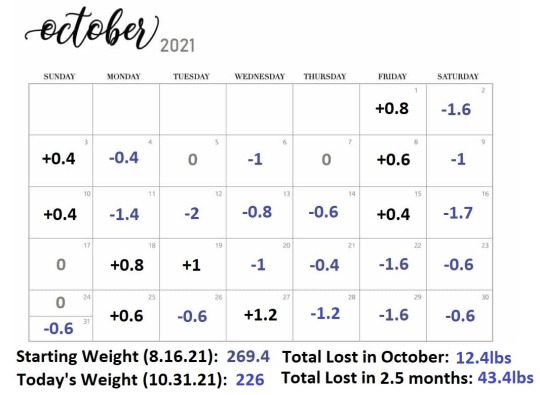

Monthly Stats Update Time!
I always knew October was one of my favorite months and this progress just seals the deal for it this year. I’m SO proud of all the effort that went into this massive 12lb loss and 90 miles of walking. I feel like the loss is also visibly showing on my silhouette and I’m finally making progress towards feeling good in my skin again.
We’re coming up close to my sweet spot of feeling comfortable in my body (210s) while also encouraged to keep losing. I felt damn good at 200lbs and while my Ultimate Goal Weight has always been 150 I love that I can truly enjoy the journey on the way down. Not that I actually ever expect to hit 150. I got to 165 for my wedding before quickly gaining 100lbs back when I moved to Virginia in 2016.
I’m honestly surprised I’m losing this quickly and attribute it to all the walking, counting calories, staying keto and eating Factor75 for dinners almost every night. Having macro and portion controlled meals easily accessible (that only take 2 minutes in the microwave) has made an incredible difference. Also, being able to easily log the meals by just typing in the name of the dinner instead of having to list every ingredient makes the logging that much more convenient.
There really are benefits of not having any friends or family nearby and getting to 100% focus on diet and exercise :) We’ll see what the next two months bring and what I can close out the year at!
83 notes
·
View notes
Text
How Do I Know If I Am In Ketosis?
Are you following a ketogenic diet and wondering whether you are in ketosis? The state of ketosis is a metabolic process that occurs when the body burns fat for energy instead of carbohydrates. In this article, we will discuss the signs and symptoms of ketosis, how to measure it, and how to stay in ketosis to reap its benefits. If you want to see our full keto tips take a look here at our keto blog.
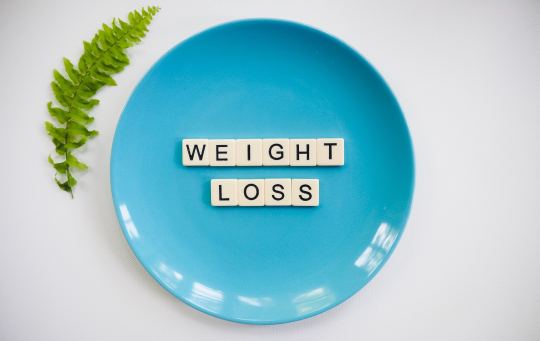
What is Ketosis?
Ketosis is a natural metabolic state that occurs when the body switches from burning glucose (sugar) as its primary source of fuel to burning fat. This occurs when the body has depleted its glycogen stores, which are typically replenished by consuming carbohydrates. When glycogen stores are depleted, the liver starts breaking down fats into molecules called ketones, which the body can use as an alternative source of energy.
Signs and Symptoms of Ketosis
There are several signs and symptoms that can indicate you are in ketosis. These include:
Increased thirst and dry mouth
Increased energy and mental clarity
Decreased appetite and cravings
Bad breath (also known as keto breath)
Rapid weight loss
Changes in bowel movements
Changes in sleep patterns
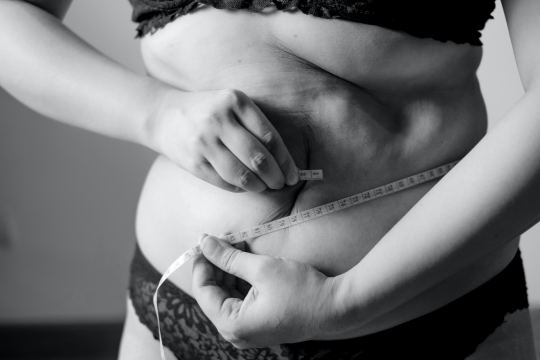
How to Measure Ketones
There are three primary ways to measure ketones in the body: through urine, blood, and breath.
Urine:Ket ones can be detected in urine using ketone urine strips, which change color based on the level of ketones present. However, this method is less accurate than other methods as it only measures ketones excreted in urine.
Blood: Ketones can be measured in the blood using a blood ketone meter. This method is more accurate than urine testing and provides a precise measurement of ketone levels.
Breath: Ketones can also be detected in the breath using a breath ketone meter. This method is non-invasive and provides an immediate measurement of ketones.
Tips to Stay in Ketosis
Staying in ketosis requires limiting carbohydrates and increasing fat intake. Here are some tips to help you stay in ketosis:
Avoid high-carbohydrate foods such as bread, pasta, and sugar
Increase your intake of healthy fats such as avocado, nuts, and olive oil
Incorporate moderate amounts of protein into your diet
Stay hydrated by drinking plenty of water
Exercise regularly to burn fat and improve insulin sensitivity
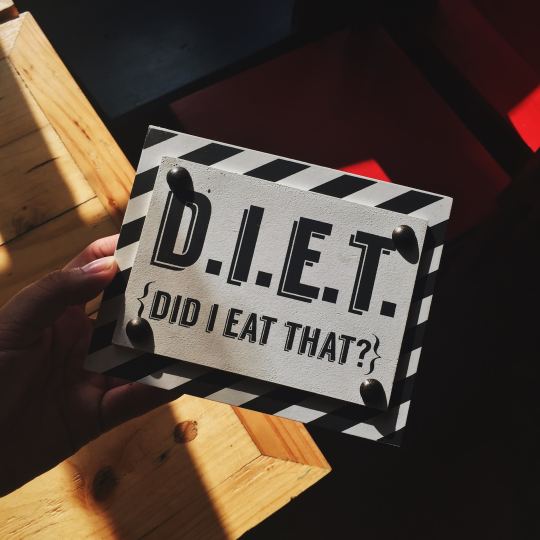
Benefits of Ketosis
Ketosis has been shown to provide several health benefits, including:
Rapid weight loss
Improved insulin sensitivity and blood sugar control
Reduced inflammation
Improved mental clarity and focus
Reduced risk of certain diseases, such as type 2 diabetes and Alzheimer's disease
Risks and Side Effects of Ketosis
While ketosis can be beneficial for some individuals, it can also have side effects, such as:
Bad breath (keto breath)
Fatigue and weakness
Headaches
Digestive issues such as constipation and diarrhea
Decreased athletic performance
Common Myths about Ketosis
There are several myths surrounding ketosis that are not backed by scientific evidence. These include:
Ketosis is the same as ketoacidosis (a dangerous condition that can occur in people with type 1 diabetes)
Eating high amounts of fat is unhealthy
A ketogenic diet is not sustainable long-term
It's important to do your own research and consult with a healthcare professional before starting a ketogenic diet to determine if it's right for you.
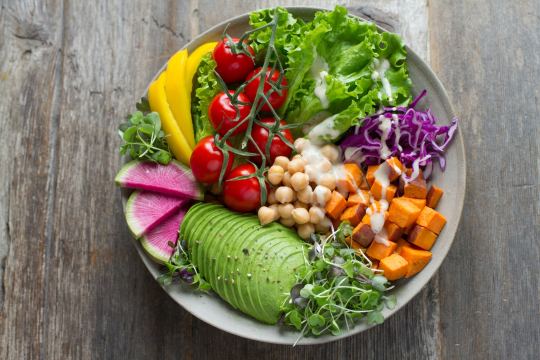
How to Get into Ketosis Faster
If you're looking to get into ketosis faster, there are several strategies you can try:
Decrease your carbohydrate intake to less than 20-50 grams per day
Increase your intake of healthy fats
Incorporate intermittent fasting into your routine
Exercise regularly to burn through glycogen stores
Try exogenous ketones supplements to help boost ketone levels
Foods to Eat and Avoid on a Ketogenic Diet
To stay in ketosis, it's important to limit your intake of carbohydrates and increase your intake of healthy fats. Here are some foods to eat and avoid on a ketogenic diet:
Foods to Eat:
Healthy fats: avocado, nuts, seeds, olive oil, coconut oil
Low-carbohydrate vegetables: spinach, broccoli, cauliflower, zucchini
Protein sources: eggs, fish, chicken, beef, pork
Dairy products: cheese, butter, heavy cream
Foods to Avoid:
High-carbohydrate foods: bread, pasta, rice, potatoes
Sugary foods: candy, soda, fruit juice, desserts
Processed foods: chips, crackers, processed meats
Exercise and Ketosis
Exercise can be beneficial for staying in ketosis by burning through glycogen stores and improving insulin sensitivity. However, it's important to avoid high-intensity exercise during the initial stages of a ketogenic diet, as your body may not have enough glycogen to fuel high-intensity exercise.
Conclusion
Ketosis is a natural metabolic state that occurs when the body burns fat for energy instead of carbohydrates. There are several signs and symptoms of ketosis, and there are several ways to measure it. Staying in ketosis requires limiting carbohydrates and increasing healthy fat intake, and it can provide several health benefits. However, it's important to consult with a healthcare professional before starting a ketogenic diet, as it may not be appropriate for everyone.
FAQs
How long does it take to get into ketosis?
It can take anywhere from a few days to a few weeks to get into ketosis, depending on your individual metabolism and level of carbohydrate restriction.
Can I eat fruit on a ketogenic diet?
Most fruits are high in carbohydrates and are therefore not recommended on a ketogenic diet. However, small amounts of low-carbohydrate fruits such as berries can be incorporated.
Is ketosis safe?
For most healthy individuals, ketosis is safe. However, it can be dangerous for individuals with certain medical conditions, such as type 1 diabetes.
How can I avoid the side effect of bad breath on a ketogenic diet?
Drinking plenty of water, chewing sugar-free gum, and practicing good oral hygiene can help reduce the side effect of bad breath on a ketogenic diet.
Can I exercise on a ketogenic diet?
Yes, exercise can be beneficial for staying in ketosis. However, it's important to avoid high-intensity exercise during the initial stages of a ketogenic diet.
#signs of ketosis#am i in ketosis#ketosigns#ketodietsigns#amilosingweight#ketonetesting#ketone testing#testing for ketones
1 note
·
View note
Text
How Atkins and the Keto Diet are Similar but Different
Low-carbohydrate diets have been gaining popularity in recent years due to their potential health benefits and effectiveness in aiding weight loss. Among the many low-carb diets, the Atkins and Keto diets are two of the most well-known. Although they share some similarities, there are also some significant differences between the two. In this article, we will explore the similarities and differences between the Atkins and Keto diets and help you decide which one is best for you.
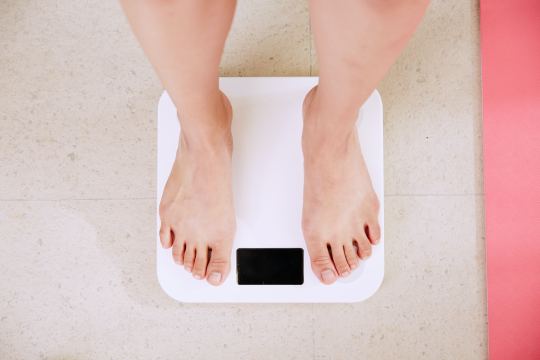
Introduction
The Atkins and Keto diets are two popular low-carb diets that have gained significant attention in recent years for their potential weight loss and health benefits. Both diets restrict carbohydrate intake and focus on increasing fat and protein consumption, but they differ in their approach to macronutrient ratios and overall health benefits. This article will explore the similarities and differences between the Atkins and Keto diets, as well as their potential risks and benefits. It will also provide tips for incorporating these diets into a healthy and sustainable lifestyle. If you want to learn more on the Keto Diet read Dr. Dexters Keto Guide for a more full overview of the keto diet and get keto tips.
Definition of low-carb diets
Low-carbohydrate diets are diets that restrict or limit the intake of carbohydrates, including sugars and starches, and focus on consuming protein and fat instead. The goal of a low-carb diet is to force the body to burn fat for fuel instead of glucose, which can lead to weight loss and improved health.
Importance of low-carb diets
Low-carb diets have been shown to have many potential health benefits, including improved blood sugar control, lower blood pressure, and reduced inflammation. They may also aid in weight loss and improve cardiovascular health.
Brief history of Atkins and Keto diets
The Atkins diet was developed by Dr. Robert Atkins in the 1960s and gained popularity in the 1990s. The Keto diet, on the other hand, is a more recent development, gaining popularity in the early 2010s. Both diets are based on the principles of low-carb eating, but they differ in their macronutrient ratios and other factors.
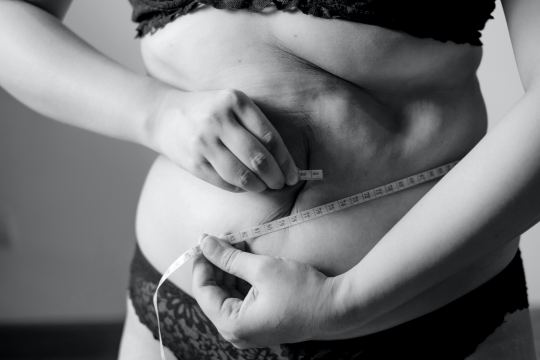
What is Atkins Diet?
The Atkins Diet is a low-carbohydrate diet that was popularized in the 1970s by Dr. Robert Atkins. The diet is based on the theory that limiting carbohydrates and increasing protein and fat intake will lead to weight loss and improved health. The Atkins Diet consists of four phases: induction, ongoing weight loss, pre-maintenance, and maintenance. During the induction phase, carbohydrate intake is limited to 20 grams per day. As the diet progresses, carbohydrates are gradually reintroduced.
Definition of Atkins diet
The Atkins diet is a low-carb, high-fat diet that is divided into four phases. The first phase, known as the induction phase, restricts carbohydrate intake to 20 grams per day and focuses on protein and fat consumption instead.
Phases of Atkins diet
The four phases of the Atkins diet are:
Induction: This phase restricts carbohydrate intake to 20 grams
Ongoing weight loss: In this phase, carbohydrate intake is gradually increased to find the optimal carb level for weight loss.
Pre-maintenance: This phase increases carbohydrate intake even further to prepare the body for maintenance.
Maintenance: This phase is the long-term maintenance phase where carbohydrate intake is increased to a sustainable level.
Foods to eat and avoid on Atkins diet
Foods that are allowed on the Atkins diet include meat, fish, eggs, cheese, vegetables, and healthy fats. Carbohydrate-rich foods like bread, pasta, and sugary foods are restricted.

What is Keto Diet?
The Keto Diet, short for ketogenic diet, is a low-carbohydrate, high-fat diet that aims to put the body into a state of ketosis. This is achieved by drastically reducing carbohydrate intake and increasing fat consumption. When the body is in ketosis, it burns fat for energy instead of carbohydrates. The diet has gained popularity for its potential benefits in weight loss, diabetes control, and improved mental clarity.
Definition of Keto diet
The Keto diet, also known as the ketogenic diet, is a very low-carb, high-fat diet that is designed to put the body in a state of ketosis. Ketosis is a metabolic state where the body burns fat for fuel instead of glucose.
Phases of Keto diet
There are no specific phases of the Keto diet. Instead, the focus is on maintaining a consistent state of ketosis by consuming a very low amount of carbohydrates.
Foods to eat and avoid on Keto diet
Foods that are allowed on the Keto diet include meat, fish, eggs, cheese, vegetables, and healthy fats. Carbohydrate-rich foods like bread, pasta, and sugary foods are strictly limited.
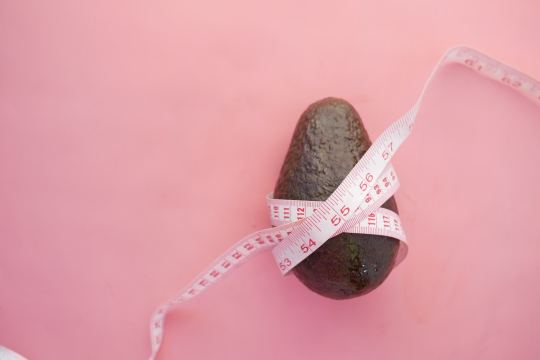
Comparison of Atkins and Keto Diets
Both the Atkins and Keto diets are low-carbohydrate, high-fat diets that aim to promote weight loss and improve health. However, the Keto diet is stricter in terms of carbohydrate intake and focuses on achieving ketosis, while the Atkins diet has four phases with varying carbohydrate levels. The Atkins diet may be more flexible but can lead to more gradual weight loss, while the Keto diet is more restrictive but can result in quicker weight loss.
Differences in macronutrient ratios
The Atkins diet typically has a higher protein intake than the Keto diet. The Keto diet is a very high-fat diet, with up to 75% of calories coming from fat, while the Atkins diet is a moderate-fat diet with around 40% of calories coming from fat.
Differences in carb intake
The induction phase of the Atkins diet restricts carbohydrate intake to 20 grams per day, while the Keto diet typically restricts carbohydrate intake to 20-50 grams per day.
Differences in protein intake
The Atkins diet typically has a higher protein intake than the Keto diet. This is because the induction phase of the Atkins diet focuses on high protein consumption.
Differences in fat intake
The Keto diet is a very high-fat diet, with up to 75% of calories coming from fat, while the Atkins diet is a moderate-fat diet with around 40% of calories coming from fat.
Differences in health benefits
Both diets have been shown to have potential health benefits, such as improved blood sugar control and weight loss. However, the Keto diet may have additional benefits for neurological conditions such as epilepsy.
Differences in weight loss results
Both diets have been shown to be effective for weight loss, but the Keto diet may lead to more rapid weight loss in the short term.
Differences in potential side effects
The Atkins diet may cause side effects such as constipation, bad breath, and high cholesterol levels. The Keto diet may cause side effects such as the "Keto flu," which is characterized by headaches, nausea, and fatigue.
Which Diet is Better for You?
Factors to consider when choosing a low-carb diet
When choosing a low-carb diet, factors to consider include personal health goals, lifestyle, and food preferences.
Pros and cons of Atkins diet
Pros of the Atkins diet include rapid weight loss and potential health benefits. Cons of the Atkins diet include potential side effects and a restrictive induction phase.
Pros and cons of Keto diet
Pros of the Keto diet include rapid weight loss and potential health benefits, especially for neurological conditions. Cons of the Keto diet include potential side effects and the restrictive nature of the diet, which may make it difficult to follow long-term.
Conclusion: Atkins vs Keto
While both the Atkins and Keto diets are low-carb diets that focus on weight loss and improving health, they have some key differences in their macronutrient ratios, carb intake, protein intake, and health benefits. Ultimately, the best diet for an individual will depend on their personal health goals, lifestyle, and food preferences.
FAQs
1. Can the Atkins and Keto diets be followed by vegetarians or vegans?
Both diets can be adapted for vegetarians or vegans, but it may require more planning and effort to ensure adequate protein intake.
2. Can the Atkins and Keto diets be followed long-term?
While both diets can be followed long-term, it is important to consult with a healthcare professional to ensure that the diet is meeting all nutritional needs.
3. Are there any risks associated with following a low-carb diet like Atkins or Keto?
There are potential risks associated with following a low-carb diet, such as nutrient deficiencies, constipation, and the potential for high cholesterol levels. It is important to consult with a healthcare professional before starting any new diet.
4. Can the Atkins and Keto diets be followed by people with diabetes?
Both diets may be beneficial for people with diabetes, but it is important to consult with a healthcare professional to ensure that the diet is properly managed and monitored.
5. Are there any foods that are allowed on one diet but not the other?
While there may be some differences in specific foods that are allowed or restricted on the Atkins and Keto diets, both diets focus on limiting carbohydrate intake and increasing healthy fat and protein consumption.
#atkins#ketodiet#ketorecipes#ketotips#lowcarb#low carb diet#banting#banting diet#ketosis#atkins diet#what is the atkins diet#keto#LCHF#Keto LCHF#weight loss#diet and health#diet advice#diet guide#tips for keto#low carb high fat#ketosis diet
4 notes
·
View notes
Text
How to Create a Keto Shopping List
Are you following a keto diet and struggling to figure out what to buy at the grocery store? Creating a keto shopping list is the key to success when it comes to staying on track with your diet. In this article, we will guide you through the process of creating a comprehensive keto shopping list that includes all the essential ingredients you need for your meals.
Understanding the Keto Diet
Before we dive into creating a keto shopping list, let's first understand the basics of the keto diet. The ketogenic diet is a low-carb, high-fat diet that puts your body into a metabolic state called ketosis. In ketosis, your body burns fat for energy instead of carbohydrates. The goal of the keto diet is to keep your carb intake low and increase your fat intake to reach a state of ketosis.
Benefits of the Keto Diet
The keto diet has numerous benefits, including weight loss, improved blood sugar control, and increased energy levels. It also helps to reduce the risk of several diseases, including heart disease, diabetes, and certain types of cancer.
Foods to Avoid on a Keto Diet
To follow a keto diet, you need to avoid certain foods that are high in carbs, including:
Sugary foods such as candy, cake, and cookies
Grains such as rice, wheat, and oats
Starchy vegetables such as potatoes and corn
Fruits such as bananas, apples, and oranges
Creating a Keto Shopping List
Now that you understand the basics of the keto diet, it's time to create your keto shopping list. Here are some essential items you should include:
Proteins
Proteins are an essential part of any keto diet. They help to keep you full and provide your body with the necessary nutrients. Here are some protein sources you should include in your shopping list:
Beef, chicken, turkey, and pork
Fish and seafood such as salmon, shrimp, and tuna
Eggs
Tofu and tempeh for vegetarians and vegans
Fats and Oils
Fats are the primary source of energy on the keto diet. You should aim to include healthy fats in your meals. Here are some examples of fats and oils you should include in your shopping list:
Olive oil
Coconut oil
Avocado oil
Butter and ghee
Nuts and seeds such as almonds, pecans, and chia seeds
Vegetables
Vegetables are an essential part of any diet, including the keto diet. However, you need to choose low-carb vegetables that are high in fiber. Here are some examples of vegetables you should include in your keto shopping list:
Leafy greens such as spinach, kale, and arugula
Broccoli, cauliflower, and cabbage
Bell peppers, zucchini, and eggplant
Mushrooms, onions, and garlic
Dairy
Dairy products can be included in the keto diet, but you need to choose low-carb options. Here are some examples of dairy products you can include in your keto shopping list:
Cheese such as cheddar, mozzarella, and feta
Greek yogurt
Heavy cream
Cottage cheese
Snacks and Condiments
Even on a keto diet, you can still enjoy snacks and condiments. Here are some examples of keto-friendly snacks and condiments you can include in your shopping list:
Olives
Pickles
Mustard
Hot sauce
Sugar-free chocolate
Tips for Creating a Successful Keto Shopping List
Here are some additional tips to keep in mind when creating your keto shopping list:
Plan your meals for the week ahead and make a list of the ingredients
Continue writing please
Stick to the perimeter of the grocery store where you'll find fresh produce, meats, and dairy products.
Look for sales and discounts on keto-friendly items to save money.
Don't shop when you're hungry, as you may be tempted to buy unhealthy snacks.
Read food labels carefully to check for hidden carbs and sugars.
Consider buying in bulk to save money and reduce waste.
Conclusion
Creating a keto shopping list may seem overwhelming at first, but it's an essential step in following a successful keto diet. By including the essential food groups and following our tips, you'll be able to create a comprehensive shopping list that supports your health goals. Remember to plan ahead, read food labels, and choose healthy, keto-friendly options.
See our full list of keto tips here.

FAQs
Can I include fruits in my keto shopping list? No, fruits are high in carbs and sugar and should be avoided on a keto diet.
Is it okay to eat dairy products on a keto diet? Yes, you can eat dairy products on a keto diet, but you need to choose low-carb options.
Should I buy organic produce for my keto diet? While organic produce is a healthier option, it's not necessary for a keto diet. Choose fresh, low-carb vegetables regardless of whether they are organic or not.
Can I eat snacks on a keto diet? Yes, you can eat snacks on a keto diet, but make sure they are low-carb and keto-friendly.
How often should I update my keto shopping list? It's a good idea to update your keto shopping list every week to reflect your changing meal plans and ensure you have the necessary ingredients on hand.
1 note
·
View note
Text
Starting Keto Guide
The keto diet is a low-carb, high-fat diet that has become popular for its potential benefits such as weight loss, improved energy, and better blood sugar control. Here are some steps to help you get started:
Understand the basics of the keto diet: The keto diet is based on the principle of ketosis, which is a metabolic state where the body burns fat for fuel instead of carbohydrates. To achieve this, you need to drastically reduce your intake of carbohydrates and increase your consumption of healthy fats.
Determine your macros: Your macronutrient intake will vary depending on your individual needs and goals. Generally, the keto diet involves getting 70-75% of your calories from fat, 20-25% from protein, and 5-10% from carbohydrates. You can use online calculators to help you determine your macros.
Plan your meals: Focus on meals that are high in healthy fats, moderate in protein, and low in carbohydrates. Some good examples include avocados, nuts and seeds, fatty fish, and grass-fed meat. You should also aim to eat plenty of non-starchy vegetables like leafy greens, broccoli, and cauliflower.
Start tracking your food: Keeping track of your food intake can be helpful when starting the keto diet. You can use apps like MyFitnessPal or Cronometer to log your meals and track your macros.
Be patient: It may take some time for your body to adjust to the keto diet and for you to see results. Stick with it and be patient with yourself.
Stay hydrated: It's important to drink plenty of water when following the keto diet to help prevent dehydration and to support your body's natural detoxification processes.
Consider supplementing: Because the keto diet involves limiting certain foods, you may need to supplement with certain vitamins and minerals to ensure that you are getting all the nutrients your body needs. Consult with your healthcare provider before starting any new supplements.
Remember, the keto diet is not for everyone, and it's important to talk to your healthcare provider before making any major changes to your diet. Good luck!
See our keto tips site https://drrexdexter.tumblr.com/ here. We are adding keto tips as often as we can to make your keto diet journey as easy and as successful as possible.

#ketodiet#ketofriendly#ketorecipes#ketomeals#lowcarb#ketotips#lcaf#lchfuk#dietuk#weightloss#weight loss guide
3 notes
·
View notes